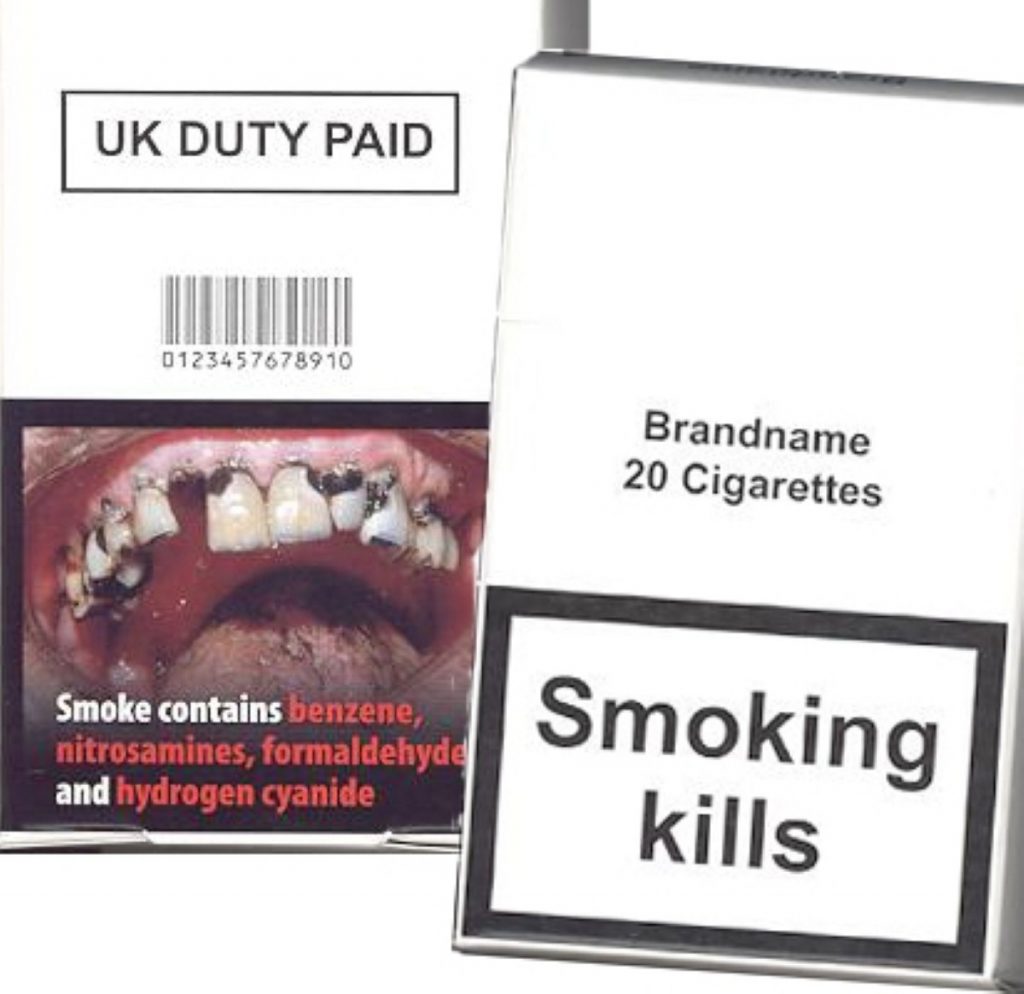The new face of cigarettes?
By Ian Dunt
Pressure is growing for the government to rid cigarette packets of their designs and branding ahead of a parliamentary vote next month.
The Liberal Democrats are trying to reintroduce an amendment to the health bill – due to be debated on the day parliament returns from summer recess – calling for the government to scrap cigarette pack designs.
In Australia, the government’s Preventative Health Task Force has advised it to “eliminate promotion of tobacco products through design of packaging” as part of a comprehensive strategy to reduce tobacco deaths. The Lib Dems are calling for a similar move in the UK.


Meanwhile, new research from the University of Nottingham published today showed tobacco branding and packaging send misleading signals to young people and adult smokers.
The research reveals that products bearing the word ‘smooth’ or using light coloured branding misled people into thinking that the products are less harmful to their health.
“This research shows that the only sure way of putting an end to this misleading marketing is to require all tobacco products to be sold in plain packaging,” said Deborah Arnott, chief executive of Ash, an anti-smoking group.
“That would remove false beliefs about different brands and communicate the message that all cigarettes are dangerous.
“This matter has been discussed by parliament and there is now a perfect opportunity to include a requirement for plain packaging of tobacco products to be included in the health bill.”
Since 2002 it has been illegal for manufacturers to use trademarks, text or any sign to suggest that one tobacco product is less harmful than another. But campaigners say tobacco companies have now resorted to using colour and associative words to achieve the same goal.
“A central feature of tobacco marketing strategy has been to promote the perception that some cigarettes are less hazardous than others, so that smokers worried about their health are encouraged to switch brands rather than quit,” said professor David Hammond, lead author of the report.
“These tactics are giving consumers a false sense of reassurance that simply does not exist.”
Participants in the Nottingham study were shown pairs of cigarette packs and asked to compare them on five measures: taste, tar delivery, health risk, attractiveness, and either ease of quitting (adults) or which they would choose if trying smoking (children).
Adults and children were significantly more likely to rate packs with the terms ‘light’, ‘smooth’, ‘silver’ and ‘gold’ as lower tar, lower health risk and either easier to quit (adults) or their choice of pack if trying smoking (children).
More than half of adults and youth reported that brands labelled as ‘smooth’ were less harmful than the ‘regular’ variety.
Simon Clark, director of the smokers’ rights group Forest questioned the evidence linking design to smoking habits.
“Very few people, if any, start smoking because they see a brightly coloured packet or the words ‘light’ or ‘mild’,” he told politics.co.uk.
“People aren’t stupid. They know there are health risks associated with smoking regardless of the branding.
“Groups like ASH won’t be happy until cigarettes are sold under the counter in plain white packets. This has nothing to do with the alleged impact of tobacco branding. It’s all about the denormalisation of smoking, which has a rather Orwellian ring to it.
“This isn’t the nanny state. It’s the bully state. What next? Plain white labels on alcohol or food with a high calorie count?”
The colour of packs was also associated with perceptions of risk and brand appeal.
For example, compared to packs with a red logo, cigarettes in packs with a gold logo were rated as a lower health risk by 53 per cent of people and easier to quit by 31 per cent of adult smokers.

